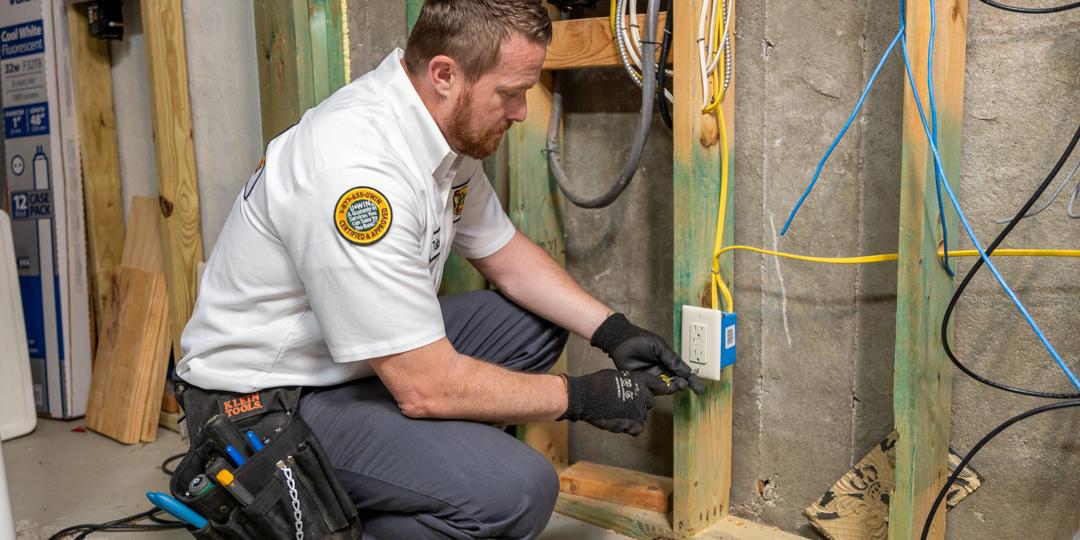Atlanta is full of historic homes, and that means it’s also, unfortunately, full of historic electrical systems. You may have already heard of the dangers of outdated wiring, but older, two-pronged plugs pose their own threat, even if your home has modern wiring.
Read on to learn why two-pronged outlets are the least-safe plug option and what you can do about the ones in your home.
Are Two-pronged Outlets Grounded?
No. This is the main problem with two-pronged plugs: the two prongs connect to a “hot wire” and a “neutral wire,” both of which carry an electric current. There’s no grounding wire to bleed off power surges or transfer unstable currents.
Ground wires were first added to homes in the 1940s and ‘50s, though they weren’t required until the early 1970s. If your home predates 1971, it may have most or all two-pronged plugs. Even if your home was built after the early ‘70s, it may have ungrounded two-pronged plugs that don’t take advantage of the safety that ground wiring offers.
Why Do Outlets Need to Be Grounded?
Grounding is a safety feature that allows excess electric charge to safely escape the system. Ungrounded outlets can shock you or overload plugged-in devices in the case of a short circuit. With grounding, that unstable current is shifted to the grounding wire instead.
Short circuits can also cause house fires. According to the US Fire Association, 12% of home electrical fires involved an outlet or receptacle and 23% involved an unspecified short-circuit arc.
Should I Convert Two-prong Outlets to Three-prong?
Yes, it’s a good idea! Three-pronged outlets are grounded plugs that reduce the risk of shock, short-circuit damage, and fires. They’re also safer for devices like power strips and space heaters, which can heat up an ungrounded outlet and ignite a fire.
While many Atlanta-area homeowners have used their two-pronged outlets for years, they’re still the most dangerous option you have for plugging things in. Virtually all modern appliances and other electric devices have three-pronged plugs. While plug adapters (also called cheater plugs) exist, they’re not any safer than an ungrounded outlet.
When to Replace a Two-pronged Outlet with a GFCI Outlet
Ground Fault Circuit Interrupters or GFCI outlets “trip” or break the circuit when they’re overloaded or detect an unbalanced current. They’re required in any area that might get wet, making them most common in kitchens, bathrooms, basements, and outdoor areas. If you don’t have these protective outlets in a room with a water hookup, it’s time for an outlet replacement to reduce the risk of electric shock.
How to Change a Two-pronged Outlet to Three
There are two ways an electrician can convert a two-prong outlet to three:
-
Retrofitting. Some two-pronged systems can be retrofitted with a ground wire. If you’re really lucky, your system may even have a ground wire already, even if it’s not connected to your outlets. An electrician will be able to tell you if your wiring is up-to-date enough for retrofitting and know how to ground a two-pronged outlet for you.
-
Full replacement. Unfortunately, your current electrical system may not be able to support a new grounding wire. In that case, you’ll likely need rewiring or a panel update along with your new outlets.
Schedule Mister Sparky of Atlanta to Upgrade Your Two-pronged Outlets
Replacing outlets is a job for the experts! The reliable electricians at Mister Sparky of Atlanta will have your outlets rewired quickly, so you can enjoy the peace of mind that comes with more electrical safety. Call us at (770) 824-9592 or book an appointment online.















